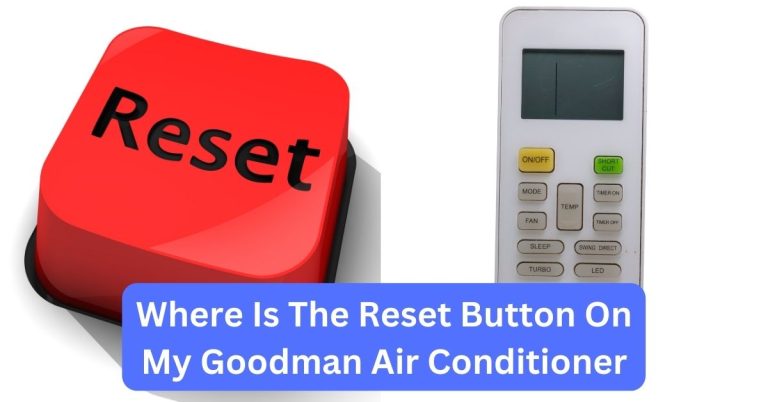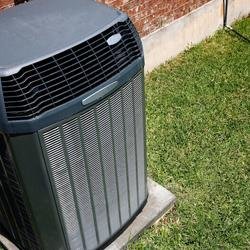How Much Power Does An Rv Ac Use? Expert Insights And Tips
The amount of power an RV AC unit uses varies depending on the model and its cooling capacity. On average, an RV AC unit can consume around 1,200 to 1,800 watts of power when running. It is important to check the specifications of your specific AC unit to know the exact power usage.
Do you ever wonder how much power your RV’s air conditioning unit uses? As an RV owner or enthusiast, it’s essential to understand the power requirements of your AC unit to ensure that your power supply can handle the load efficiently. The last thing you want is to be left without air conditioning on a scorching summer day because your power supply couldn’t keep up.
In this blog article, we will dive into the world of RV air conditioning power consumption. We will explore the factors that affect the energy consumption of your AC unit and provide you with valuable information to help you make informed decisions about your power usage.
Whether you’re a beginner or have some knowledge about RV electrical systems, this article will cover everything you need to know about the power requirements of your RV’s air conditioning unit. We will discuss the average power consumption of different types of AC units, factors that can affect energy usage, and tips on how to optimize your AC’s power consumption. By the end of this article, you will have a clear understanding of how much power your RV AC uses and how to ensure that your power supply can handle it.
So, if you want to keep your cool while on the road and avoid any surprises with your power supply, keep reading. Let’s uncover the mystery of RV air conditioning power consumption and take control of your RV’s energy needs.
Understanding RV Air Conditioning Power Consumption
As an RV owner or enthusiast, it’s crucial to have a clear understanding of the power requirements of your RV’s air conditioning unit. Knowing how much power your RV AC uses will help you ensure that your power supply can handle the load efficiently and keep you cool during your travels.
The Average Power Consumption of RV Air Conditioning Units
RV air conditioning units come in different sizes and capacities, and their power consumption can vary accordingly. On average, a typical RV air conditioner will consume around 13,500 to 15,000 BTUs (British Thermal Units) per hour. This translates to approximately 12-16 amps of power usage. However, it’s important to note that this is just an average, and actual power consumption can vary based on several factors.
Factors That Affect RV Air Conditioning Power Consumption
Several factors can impact the energy usage of your RV air conditioning unit. Understanding these factors will help you make informed decisions regarding your power usage and optimize your AC’s efficiency:
- Outdoor Temperature: The higher the outdoor temperature, the harder your AC unit has to work to cool the interior of your RV. This increased workload can result in higher power consumption.
- Insulation and Ventilation: Proper insulation and ventilation play a vital role in reducing the workload on your AC unit. Well-insulated RVs with good airflow require less power to maintain a comfortable temperature.
- AC Unit Efficiency: Modern RV air conditioning units are designed to be more energy-efficient than older models. If you have an older unit, it may consume more power compared to newer, energy-efficient models.
- AC Unit Size: The size and capacity of your AC unit directly impact its power consumption. Larger units with higher BTU ratings will consume more power to operate.
Tips to Optimize RV Air Conditioning Power Consumption
While you may not have control over certain factors, there are several steps you can take to optimize the power consumption of your RV air conditioning unit:
- Choose the Right Size Unit: Select an AC unit that is appropriately sized for your RV. An oversized unit will consume more power, while an undersized unit may struggle to cool your RV effectively.
- Optimize Insulation: Ensure that your RV is properly insulated to minimize heat transfer. This will reduce the workload on your AC unit and lower power consumption.
- Maximize Ventilation: Improve airflow inside your RV by opening windows and using ceiling vents or fans. This will help your AC unit circulate cool air more efficiently.
- Use Shading: Park your RV in shaded areas to reduce the direct exposure to sunlight. This will help keep the interior cooler and decrease the workload on your AC unit.
- Maintain Your AC Unit: Regularly clean and maintain your AC unit to ensure optimal performance. Dirty filters or clogged condenser coils can increase power consumption.
Understanding the power consumption of your RV’s air conditioning unit is essential for a hassle-free and comfortable journey. By knowing how much power your RV AC uses and implementing energy-saving strategies, you can ensure that your power supply can handle the load and keep you cool on the road.
Remember to consider factors such as outdoor temperature, insulation, ventilation, AC unit efficiency, and size when assessing the power consumption of your RV air conditioning unit. By following the tips mentioned above, you can optimize your AC’s power consumption and make the most of your RV’s energy needs.
So, the next time you hit the road in your RV, you can rest assured that your AC unit will keep you cool without overwhelming your power supply. Safe travels!
Improve RV Air Conditioner cooling & reduce power use for about $10 (huge RV needs list Below Video)
Frequently Asked Questions (FAQ)
How much power does an RV AC use?
Final Summary: Optimizing Power Consumption for Your RV’s Air Conditioning Unit
In conclusion, understanding the power consumption of your RV’s air conditioning unit is crucial for a comfortable and hassle-free journey. On average, an RV air conditioner will consume around 13,500 to 15,000 BTUs per hour, equivalent to approximately 12-16 amps of power usage.
However, it’s important to consider factors such as outdoor temperature, insulation, ventilation, AC unit efficiency, and size, as they can impact power consumption. To optimize power consumption, it is recommended to choose the right size unit for your RV, optimize insulation to minimize heat transfer, maximize ventilation to improve airflow, use shading to reduce direct sunlight exposure, and regularly maintain your AC unit.
By implementing these energy-saving strategies, you can ensure that your power supply can handle the load and keep you cool on the road. Having a clear understanding of how much power your RV AC uses and following these tips will help you make informed decisions regarding your power usage and maximize your AC’s efficiency. By doing so, you can enjoy a comfortable temperature inside your RV without overwhelming your power supply.
So, the next time you embark on a road trip in your RV, rest assured that your AC unit will keep you cool while optimizing power consumption. Safe travels!






